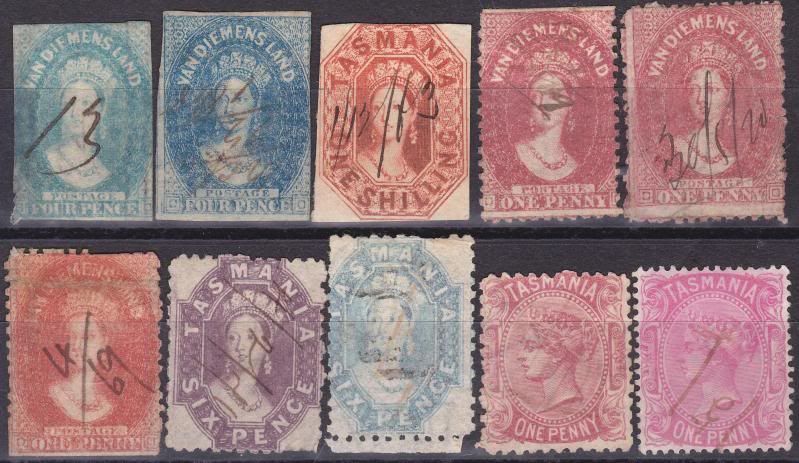#28
Post
by admin » Sat Apr 24, 2010 4:47 pm
Josto,
You may well be aware of the following, but if not it may help. Stamp duty was first introduced into Tasmania in 1863, on 24th September. Before that time, stamps were only used to pay postage. From Sept 1863, stamp duty could be paid either by reveue or postage stamps, hence the commonly seen chalons with pen cancell dates. So, any marking on a stamp before then is most likely a postal marking.
During the First Allocation of Barred Numerals, from 1853 to 1861, postage stamps were often cancelled in maunscript, either with the numeral of the Post Office or with a squiggle, cross, hatching, wavy lines etc. Sometimes the name of the post office was written accross the stamp in full.During the second allocation of numerals, from 1861onwards, stamps were mostly cancelled with a Barred numeral canceller and manuscript cancells were much less common. From 1863, manuscript dates on stamps are almost certainly revenue cancells and as such significantly reduce the value of the stamp as reveue useage was far more common than postal useage.
If you dont have the stamp on cover so as to be able to identify the date of posting, you will need to check your catalogue to see when the stamp was issued. If before 1863, it would not have been cancelled for revenue purposes. Obviously if you can read the date as per the pen cancell, then you know which period you are in.
You could safely assume any pen marking on a Courier, Star or no watermark imperf stamp is a postal marking, hence, if its a number, its most likely a manuscript numeral, such as the 13 you have displayed, which I think is numeral 13 of Bothwell.
It gets more tricky with the later imperf chalon issues as they could conceivably have been cancelled during the stamp duty period. Anything on a perf Chalon or sideface is most likely a revenue cancell.Where its a hand-written date, its pretty much certain to be a reveue cancell, as is the case with the rest of the stamps you have listed.
As for rarity ratings of first allocation numerals including in manuscript, theres a very useful article in the Courier, no 29, by Randall Askeland, which revises the rarity ratings given in Vol 1 of the "Green Books". This article gives rarity ratings for the numeral hand stamp, numeral in manuscript, Manuscript Town Name, and also the various suiggles, cross hatches and other pen marks sometimes seen. I think this edition may still be available form the Tas Philatelic Society for less than $10. It also has other useful articles on frank Stamps and semi-official post cards.
Pete

